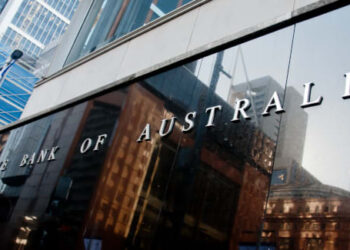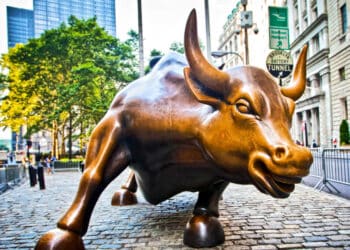The Australian ETF market is just shy of hitting the $200 billion mark, standing at some $195 billion in funds under management (FUM) as at April 2024.
Last year, it witnessed net new money of $15 billion, coming in 12 per cent higher than the $13.5 billion of net flows received in 2022.
It saw 56 new funds launched in 2023 and overall, the industry grew 33.5 per cent, or $49 billion, in the 12 months to December 2023.
Amid this considerable growth, BlackRock director, Tamara Haban-Beer Stats, believes there is still a “huge runway” for ETFs in Australia.
Speaking at the Stockbrokers and Investment Advisers Association (SIAA) 2024 Conference in Melbourne last week, the iShares ETF and index investments specialist pointed out that ETFs still comprise less than 10 per cent of the Australian investable universe.
“When you look at the FUM globally across all exchanges all over the world, it’s actually $12.5 trillion in ETFs. It’s enormous figures. There are big numbers in Australia, but we’re still in the billions, so there is a huge runway,” she said.
“Our market is smaller, but to put it in perspective, as a percentage of the overall investable universe here in Australia, ETFs make up around 6–7 per cent. In other developed markets like the US and Europe, that number is in the low teens now.
“Even globally, if you think ETFs are making up, let’s call it 13 or so per cent of overall investable FUM, there’s a huge runway there as well, but there’s a bigger runway here in Australia.”
She said the ETF industry is poised to climb as the Australian market expands, noting numerous developments such as a proliferation of product issuers, a growing range of asset classes wrapped as ETFs, and rising demand for managed accounts and model portfolios.
Another driver for the rapid growth of the asset class has been the rise of fixed income ETFs, Stats said.
According to Betashares’ year-end review, fixed income ETFs saw net flows of $5.3 billion in 2023, surpassing both Australian equities ($5.2 billion) and international equities ($2.9 billion). This trend reflects investors’ efforts to navigate a high-interest rate environment.
“The market backdrop has been quite interesting,” Stats said.
“One of the fastest growth drivers is investment into fixed income ETFs or fixed interest ETFs. Bonds and access to this part of the market has historically been a bit niche, a bit tricky. It’s not been as well understood as equity exposures. But ETFs as a vehicle, packing up fixed interest securities and making them accessible to investors, has been a huge driver of our own range, both locally and globally, but also for other issuers as well.”
Examining the broader market, she noted the increasing emphasis on choice, spanning asset classes like equities and fixed income, factor investing such as growth and momentum, and even unconventional options like cryptocurrency. Stats suggests that despite this diversity, gaps may still exist in the market, especially in sectors such as sector-based ETFs.
“Our focus at BlackRock has really been around making sure model portfolio builders across asset classes have all the core building blocks they should need, but we’ve been thoughtful in adding to that range.
“Other issuers have other strategies; I know there are more thematic strategies that have come to the market. Potentially one gap we could see are more sector-based ETFs, but that’s yet to be seen. We’re constantly canvassing the market and open to any and all ideas.”
Julie Ballard, director for channel management, S&P Dow Jones Indices, identified that, while a massive number of indices are available globally, not all of them are backed by ETFs.
“We calculate and manage around 1 million indices globally, not all of them are backed by ETFs and not all of them should be.
“If you talk more specifically in Australia, we launched an agribusiness index a few years ago, but we don’t have an ETF backing it at this stage,” she said.
“We’ve launched a sharia [index] because that’s a trend we’re seeing globally and we’re big on providing these indices in other parts of the globe, but there’s not a sharia ETF at this point.”
She acknowledged that with over 340 ETFs in the market, not all of them are being fully utilised by investors.
“Before we launch any more, we need to look at the business case and whether advisers and consumers will be investing in those ETFs,” Ballard said.
According to Ord Minnett senior private wealth adviser, Stephen Godfrey, there is something to be said about having too large a range of funds that could potentially fall short of scale.
“Maybe some of the alternative investments are a gap [in the market], and for a lot of alt strategies, there’s a reason for that. They probably don’t lend themselves to being in an open-ended vehicle, so they’re probably never going to be an ETF.
“Also, some of the more complex strategies, I think some of the issuers are talking to the ASX about how they get through the rules and compliance to get them listed, so that’ll be a work in progress,” he said.
As an adviser and allocator, he explained that he remains mindful of the size and sustainability of ETFs when making allocations.
Godfrey explained: “Now, I don’t get too caught up in it because at the end of the day, they’re liquid strategies and as a market maker, you can always get out of things, but you don’t want to have a strategy that you allocate across your book of clients and in two years’ time, the manager says, ‘It’s sub-scale, we don’t think it’s going to reach scale, and we’re closing it down’.
“That can happen and will happen, and I know a lot of issuers go, ‘Well, we never know when the ETF will come in vogue, so we have to have it there’, but some have a pretty large suite of products and I don’t know if they’ll all be there forever.
“So for me, as an allocator, you also don’t want something so esoteric that it’s never going to be of scale.”







